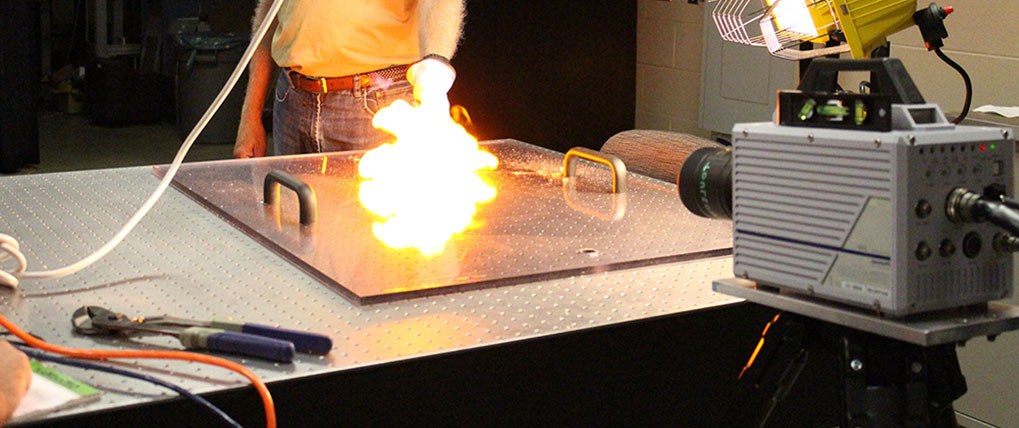
This Research Experiences for Teachers (RET) Site on the Multidisciplinary Computational Solutions to Smart Sensors and Sensing Systems, award number 1609339, PI, Dr. Wen Li, and Co-PI, Drew Kim is newly funded by the NSF CISE program, Michigan State University's College of Engineering was first awarded in 1999, titled, RET Site on Bio-Inspired Technology and Systems (BITS) with PI, Dr. Xiaobo Tan and Co-PI, Mr. Drew Kim. This renewal RET proposal for CISE has a cohesive research theme of “Multidisciplinary Computational Solutions to Smart Sensors and Sensing Systems (MCS4)”. The Site will host a total of 36 middle and high school teachers with a focus on those serving socioeconomically challenged populations and students from groups traditionally underrepresented in science and engineering.
The teachers will participate in authentic research during a 6-week Summer Institute, with “one-on-one” mentoring by 12 MSU faculty who lead vibrant research programs. The teachers are to develop innovative, standards-compliant curriculum modules and participate in professional development activities, such as workshops, seminars, and field trips. Follow-up academic year activities will ensure the translation of lab research experience into classroom practice, strengthen long-term partnership between engineering faculty and teachers, and disseminate the outcomes through TeachEngineering.org (TE), K12 Design Day Competition, and conferences/workshops. A third-party evaluation team will evaluate the Site via periodic surveys, on-site observations, and interviews to provide feedback for program improvement. The evaluation team will also conduct longitudinal studies on participants to assess the longer-term impact of our RET program.
The specific objectives of the proposed RET Site are summarized as follows: 1) train high-quality teachers who can inspire and prepare students for future college studies and careers in STEM fields; 2) improve teacher’s skills in curriculum development, leadership, communication, and instruction through greater attention to peer review and revision throughout the development process; 3) implement and disseminate innovative curricula to connect university research activities to K12 classroom practices; and 4) strengthen, sustain, and expand a long-term and healthy partnership between MSU, local school districts, and industry on advancing pre-college science and engineering education.
Intellectual Merit
The renewal RET Site-MCS4 will double-down on the previous Site’s commitment to STEM-education and dissemination among a broad, diverse set of teachers by emphasizing multidisciplinary computational methods and persistent, active collaboration. By fostering active, sustained collaboration between faculty and participants, teachers expand both their depth and breadth of knowledge regarding how and why computational methods are implemented across a wide swath of authentic STEM research. The multidisciplinary nature of our core research theme will also provide a fertile ground for developing creative STEM lessons and teaching activities that align with state and national standards, which will excite pre-college students and liven up classroom learning.
Broader Impacts
Over the past years, our RET Sites have generated significant positive impacts: MSU Computer Science major has the biggest first-years enrollment on the record this fall, and the total TE page views of our teachers’ lessons and activities are over 30,000. The renewal Site will continue to enrich the professional development of future leaders in STEM education, with about half being females and a similar ratio for minorities. It will also provide innovative and intriguing STEM curricula well aligned with college curricula, and pique the interest of middle and high school students in scientific and engineering inquiry. Through the partnership with high-need schools in Michigan, our Site will be able to distribute quality STEM learning opportunities and talented teachers to more students, especially those from underrepresented groups. The long-term collaboration between MSU and the participating schools will smooth the transition of students from these schools to colleges.
To train High School and Middle School STEM teachers in developing student confidence and skills to succeed in a global market.
- To form a strong partnership between MSU, Fraunhofer, school districts, and industry on advanced pre-college science and engineering education.
- To develop and implement innovative curriculum by translating cutting-edge curriculum education from the University into classrooms.
- Spark the interest of students in Science, Technology, Engineering, and Math (STEM).
- Train teachers to ultimately develop students’ confidence and skills to succeed in a dynamic and competitive global marketplace.
- Develop innovative curriculum that integrates interdisciplinary, hands-on learning with national and state standards.
Approach/Methods
Research
- 12 STEM teachers/year, 6-week Summer Institute on Multidisciplinary Computational Solutions to Smart Sensors and Sensing Systems.
- Close interactions between faculty, grad/undergrad students, and RET fellows
Development of standards-compliant curriculum
- During Summer Institute and the Fall semester
- Implement in classroom during the Spring semester
Project-based learning for students during semesters
- Coached by RET fellows
- MSU College of Engineering Design Day
- Annual workshop to disseminate new curricula for school teachers, administrators, and university faculty.
NSF RET Site Selection Criteria
- A participant MUST be a middle or high school teacher in Science, Technology, Engineering, or Mathematics (STEM)
- A candidate needs to be highly motivated to pursue professional development and innovate classroom curriculum, and be interested in scientific exploration.
- Each candidate is required to submit a two-page proposal for his/her plan in pursuing research and curriculum development goals, in response to the list of available research projects to be provided by the faculty mentors. The proposed activities by a successful candidate should match his/her scientific interest and available project(s), demonstrate creativity, and have good potential to impact his/her classroom teaching.
- A successful candidate is required to have strong communication skills, and desired (although not required, especially for junior teachers) to have curriculum development and leadership experiences.
The evaluation will be based on the candidate’s resume, two-page proposal, and recommendations letters from the superior. We will also conduct phone or in-person interviews as needed to make sure the best qualified teachers are brought onboard.
Selection Process
In the description of potential research projects, we have mainly focused on the nature of RET teachers’ involvement, but we recognize the importance of having the role of an RET participant explicitly defined before a project is started. This will be realized in a two-phase procedure during implementation:
- A faculty mentor and possible project(s) are decided for an RET participant during the recruitment phase, based on the participant’s background and interests;
- His or her specific role in the project will be finalized during the first week of the 7-week Summer Institute, through close interactions between the RET participant and the faculty mentor and his or her graduate students, taking into account the participant’s experiences, interests, and skills. Lead PI Tan will oversee this process and make sure that the role is decided in time.
- Must be new to the RET program.
- Interview conducted by Co-PI, Drew Kim
Interested teachers must submit their resume to Co-PI, Drew Kim, kima@egr.msu.edu.
Such a procedure will also allow us to identify the level of knowledge and skills of each participant and provide suitable and adequate orientation and training accordingly. For inexperienced participants, extra time and assistance will be provided by the faculty and graduate students to bring them up to speed.
TOPIC 1: Biosensors and Biomedical Devices
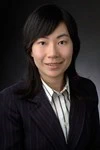 Dr. Wen Li (Electrical and Computer Eng.; Biomedical Eng.)
Dr. Wen Li (Electrical and Computer Eng.; Biomedical Eng.)
- Faculty research area: Implantable Brain-Machine Interface. Dr. Li’s research focuses on the development of implantable neural interfaces for sensing brain signals, using advanced organic/inorganic biomedical micro-electro-mechanical systems (bioMEMS) technologies. Current projects include the development of (1) hybrid opto-electro arrays for optical stimulation and electrical recording of neural activity; (2) polycrystalline diamond based electrochemical sensors; and (3) packaging methods to prolong the functional lifetime of chronically implanted microsensors.
- Research projects for teachers: include the development of (1) computational models to simulate and optimize mechanical properties and stability of implantable neural probes; (2) signal processing algorisms to better understand large-scale neural connectivity from brain recordings; and (3) bioMEMS processing and packaging techniques for building neural implant devices.
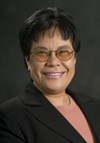 Dr. Evangelyn Alocilja (Biosystems and Agricultural Eng.)
Dr. Evangelyn Alocilja (Biosystems and Agricultural Eng.)
- Faculty research area: Nano-Enabled Biosensors for Rapid Detection of Infectious Disease. Dr. Alocilja’s research is on designing and developing nano-enabled biosensors for rapid detection of infectious agents applicable in resource-limited settings. Part of the development is the synthesis of magnetic nanoparticles functionalized with pathogen-associated molecular receptors to quickly extract, purify, and concentrate microbial pathogens (e.g. bacteria) from complex matrices. The extracted bacteria are then detected directly by electrochemical methods.
- Research projects for teachers: include computational modeling of various nanosensors for electrochemical detection. Other projects include extraction and detection of infectious agents which are transmitted through (1) food, (2) water, (3) surfaces, and (4) body fluids.
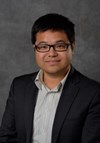 Dr. Zhen Qiu (Biomedical Eng.)
Dr. Zhen Qiu (Biomedical Eng.)
- Faculty research area: In-vivo MEMS-based Bio-optical Sensing and Imaging. Dr. Zhen Qiu's research interests include biomedical optics, MEMS/MOEMS, multi-modal targeted imaging, wearable and implantable medical devices, ultrafast laser applications. His current work is focused on miniaturized optical Dr. Zhen Qiuimaging system development for early cancer detection and imaging-guided surgical navigation, such as wide-field imaging-guided confocal microendoscope, multi-photon/SHG handheld microscope, surface-enhanced Raman spectroscopy.
- Research projects for teachers: include the development of (1) real-time system control, signal acquisition, imaging reconstruction and biomedical signal post-processing for early cancer detection and in-vivo imaging-guided surgery; (2) User-friendly GUI development (Matlab/Python/C++/C#) for clinics translational imaging system.
TOPIC 2: Robotics and Human-Machine Interaction
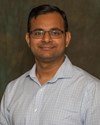 Dr. Vaibhav Srivastava (Electrical and Computer Eng.)
Dr. Vaibhav Srivastava (Electrical and Computer Eng.)
- Faculty research area: Human-Robot Interaction and Robotic Networks. Dr. Srivastava’s research focuses on the development of human-robot interaction, robotic networks including bio-inspired swarms, and aerial robotics. Current projects include the development of algorithms for multiagent robotic search, human-team supervised robotic teams, dynamic analysis of EEG signals, bio-inspired decision-making in robotic swarms, and fault-tolerant control of aerial robots.
- Research projects for teachers: include the development of (1) robotic swarms testbed to implement bio-inspired behavior; (2) EEG measurement-based human-swarm interaction; and (3) computational models to analyze EEG data for human-robot interaction.
 Dr. Xiaobo Tan (Electrical and Computer Engineering)
Dr. Xiaobo Tan (Electrical and Computer Engineering)
- Faculty research area: ARobotic Sensing Platforms and Soft Robotics. Dr. Tan’s research focuses on underwater robotics and soft robotics. In particular, his group specializes in developing bio-inspired fish-like robots for underwater sensing applications, such as sampling harmful algal blooms and tracking invasive fish species. In the area of soft robotics, he is interested in electroactive polymer sensors and actuators, as well as 3D-printed soft sensors.
- Research projects for teachers: include the development of (1) underwater sensing platforms (for example, robotic boats and remotely operated underwater vehicles); (2) artificial lateral line systems that emulate fish’s flow-sensing organ, for underwater robots to perceive the ambient hydrodynamic conditions; (3) soft sensors for measuring the strain and force of soft robotic arms.
TOPIC 3: Connected Sensing Systems and Sensor networks
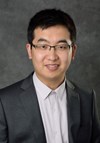 Dr. Mi Zhang (Electrical and Computer Eng.; Computer Science and Eng.)
Dr. Mi Zhang (Electrical and Computer Eng.; Computer Science and Eng.)
- Faculty research area: Smart and Connected Sensing Systems. Dr. Zhang’s research focuses on the development of smart and connected sensing systems that are mobile, distributed across edge and cloud, or embedded in the physical world. Current projects include the development of (1) efficient, dynamic, and scalable computational framework to enable deep learning on resource-constrained sensing devices such as smartphones and Internet of Things (IoT), (2) smart sensing systems for human activity and vital sign monitoring; and (3) mobile health systems and big sensor data analytics.
- Research projects for teachers: include the development of (1) a smart hearing aid enabled by energy-efficient deep learning algorithms; (2) WiFi-based device-free sensing system to support aging in place; and (3) smartphone-based behavior monitoring and analytics system for mental healthcare management.
See profile
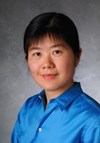 Dr. Li Xiao (Computer Science and Eng.)
Dr. Li Xiao (Computer Science and Eng.)
- Faculty research area: Smartphone Networking and Communications. Dr. Xiao’s research interests include distributed and networking systems, wireless and mobile computing, overlay systems and applications, system resource management, and design and implementations of experimental algorithms. Current projects focus on (1) the development of smart algorithms to enable the automatic switching between WiFi Direct and Bluetooth to emphasize minimizing energy consumption while still maintaining an efficient network and (2) study of different strategies such as load balancing to help increase the lifetime of the network.
- Research projects for teachers: include (1) modulation scheme diversity in multicarrier smartphone networks and (2) resource management and interference precancellation in heterogeneous cellular networks.
TOPIC 4: High Performance Computing, Pattern Recognition, and Machine Learning
 Dr. H. Metin Aktulga (Computer Science and Eng.)
Dr. H. Metin Aktulga (Computer Science and Eng.)
- Faculty research area: High-Performance Computing, Big Data Analytics. Dr. Aktulga’s research focuses on the design and development of parallel algorithms, numerical methods and software systems that can harness the full potential of state-of-the-art computing platforms to address challenging problems in large-scale scientific computations and big-data analytics problems. A distinguishing aspect of his research is the close collaborations that he has built with domain experts in a wide range of fields such as molecular modeling, materials science, nuclear physics, and sensor systems.
- Research projects for teachers: include the development of (1) scalable distributed algorithms for sensing systems and (2) efficient algorithms for embedded processors to improve the performance and/or energy usage of smart sensors.
 Dr. Arun Ross (Computer Science and Eng.)
Dr. Arun Ross (Computer Science and Eng.)
- Faculty research area: TBiometrics and Pattern Recognition. Dr. Ross’s research interests include pattern recognition, biometrics, machine learning, and computer vision. His current projects include cross-spectral face recognition, periocular biometric recognition, anti-spoofing methods for fingerprints, integrating demographics with biometrics, privacy-preserving schemes for biometric data, fusing fingerprint with DNA, mobile biometrics, big data and biometrics in the cloud.
- Research projects for teachers: include the development of (1) graphical models for predicting missing/incomplete biographic data in biometric records and (2) sensor forensics for near-infrared iris imagery.
Center Research Efforts:
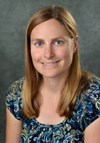 Energy and Automotive Research Laboratory (EARL)- Dr. Elisa Toulson (Mechanical Eng.; EARL)
Energy and Automotive Research Laboratory (EARL)- Dr. Elisa Toulson (Mechanical Eng.; EARL)
- Faculty research area: Alternative Fuels and Combustion. Dr. Toulson is the faculty contact at EARL. Her research interests include combustion, ignition and chemical kinetics with an emphasis on alternative and next-generation renewable fuels. Current projects include research into the autoignition and laminar flame speed characteristics of alternative fuels and examining enhanced ignition technologies, which can improve fuel consumption, reduce emissions, and improve combustion stability in internal combustion engines.
- Research projects for teachers: include (1) experimental testing of ignition systems with optical diagnostics in a rapid compression machine; (2) measurement of combustion characteristics of alternative fuels; and (3) computation fluid dynamics modeling of combustion.
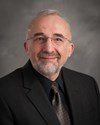 Facility for Rare Isotope Beams (FRIB) - Dr. Witold Nazarewicz (Physics and Astronomy, FRIB)
Facility for Rare Isotope Beams (FRIB) - Dr. Witold Nazarewicz (Physics and Astronomy, FRIB)
- Faculty research area: Global Properties of Atomic Nuclei. Dr. Nazarewicz is the chief scientist and faculty contact at FRIB. His research expertise is the theoretical description of those exotic, short-lived nuclei that inhabit remote regions of nuclear landscape. This research invites a strong interaction between nuclear physics, many-body-problem, and high-performance computing. His research has made important contributions to nuclear structure and reaction physics, especially in the areas or rare isotopes and nuclear dynamics.
- Research projects for teachers: Potential teacher projects include the development of (1) computational tools to visualize results of large-scale calculations of nuclear properties and (2) graphical interfaces between experimental and theoretical databases that will allow direct comparison of computer simulation results with the data.

 Fraunhofer Center for Coatings and Diamond Technologies (Fraunhofer CCD): Dr. Thomas Schuelke (Director of Fraunhofer CCD and Faculty of Electrical and Computer Eng.) and Dr. Cory Rusinek
Fraunhofer Center for Coatings and Diamond Technologies (Fraunhofer CCD): Dr. Thomas Schuelke (Director of Fraunhofer CCD and Faculty of Electrical and Computer Eng.) and Dr. Cory Rusinek
- Faculty research area: Diamond-based Chemical Microsensors, Drs. Schuelke and Rusinek’s research focuses on the development of novel thin film chemical microsensors for the detection of environmentally and biologically-Dr. Witold Nazarewiczrelevant compounds. Current projects include the development of (1) thin film deposition techniques for various carbon materials; (2) wearable boron-doped diamond sensors for toxic heavy metal measurements in human perspiration; and (3) new electrode materials for electroanalytical applications. Dr. Cory Rusinek
- Research projects for teachers: include the investigation of (1) different electrode materials for wearable sensors for sensitive detection of toxic metals and other analytes of interest, (2) complex water systems where measurements of heavy metals are needed, and (3) the performance of all-diamond microfiber electrodes compared to traditional electrodes.
Click on an activity below for more information!
- Evolving TCE Biodegraders
- Introduction to Evolutionary Computation
- Pharmaceutical Research Design Problem
- Biosensors for Food Safety
- Evolution of Digital Organisms
- Highlighting the Neuron
- If You're Not Part of the Solution, You're Part of the Precipitate!
- Studying Evolution with Digital Organisms
- Who's Hitchhiking in Your Food?
- Artificial Heart Design Challenge
- The Heart of Our Cardiovascular System
- Population Growth Curves
- Building the Neuron
- Survival of the Fittest: Competing Evolved and Engineered Digital Organisms
- Team Up!
